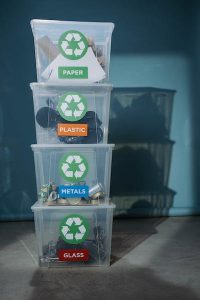This article captures how to segregate waste at home, what segregation means, how it can be practiced and its benefits to us and our planet.
Very many of us do not bother on waste segregation in our homes. But, with the rising impact these wastes leaves on our environment the need for exactly that cannot be emphasized enough.
The United States is one of the largest waste producers in the world in 2018, America produced approximately 292.4 million tons of municipal solid waste.
The good thing? Is that the U.S is concious of this and lots of people with the help of the government are adopting every step necessary to discontinue negatively impacting the space we live.
That said, for anyone who is keen on making the world a better and safe place for the next generations, you will learn and adopt how to segregate waste at home.
That’s not all, you will also encourage people you know or meet on the need to do same.
Seeing that we are all personally responsible to take steps towards waste segregation for less pollution and a healthier environment.
What is waste segregation?
Waste segregation refer to the concious separation of wet waste and dry waste from source point(i.e the home), the purpose of this is to recycle dry waste easily and to use wet waste as compost.
The Difference Between Dry and Wet Waste

For waste segregation to be achieved, you need to know the difference between wet and dry waste.
Wet waste is all the kitchen wastes we produce such as leftovers, vegetable peels, used teabags, and anything that is edible and literally wet.
We refer to biodegradable organic waste that can be composted, they are called wet wastes.
Dry Waste on the other hand, comprises of food packaging material, like metals (cans, tins) rubber, styrofoam, cardboard, plastic, glass, and paper.
Also Read: The problems with recycling
Reasons to Segregate Waste
Waste segregate helps in the reduction of waste that is emptied at landfills and occupies space, causing air, water or land pollution, therefore these are considerably lowered.
Waste segregation also helps to control and reduce insects and pest infestations problems.
It also makes it easier to apply different processes such as – composting, recycling and incineration to different kinds of waste.
Steps and Tips to Manage and Segregate Home Waste

1. To achieve segregation in your home, keep separate containers for dry and wet waste either in the kitchen or just outdoor where its safe from rodents.
2. Keep two separate bags for dry waste collection- paper and plastic, for the household wastes.
This is better achieved when labeled. Label the different dry bins for both wet and dry waste in your home. Or use two different colors to help you distinguish them.
3. Ensure that plastics from the kitchen are cleaned lean and dry before being dropped into the dry waste bin. Similarly, glass/plastic containers should be rinsed of food matter too.
4. Send wet waste out of your home daily. While, dry waste can be sent out of your home, once a week.
5. Keep a separate paper bag for dumping the sanitary waste and other hygiene related supplies
The best way to practise waste management is to be in a group of like minded people.
Also, the need for waste segregation should be thoroughly explained to family/neighbours in your apartment or neighbourhood.
Also, if you have staff give them orientation on the subject to help make the process easier and effective.
For bulk wastes, you should acquire separate storage drums for storing the dry waste and wet waste and contact the local scrap dealer to collect the dry waste.
Benefits of Waste Segregation
Aids in organisation: Waste segregation is strongly related to cleanliness and orderliness, by sorting your waste you make your living space serene and more habitable.
Promotes health and sanitation: By segregating your waste, you are less exposed to germs, bacteria etc that may cause health challenges.
Protects you from biohazards: Chemical wastes from metals, gadgets etc can decay and create harmful biohazards. These can leak and contaminate the soil, water, or atmosphere which may stem into serious health problems.
Improves community health: Segregation keeps communities safe from environmental hazards.
Protects the environment: Our planet is all the more safer with waste segregation and greener too in many ways.
Ensures physical safety: Chances of coming in contact with sharp rusty objects like bottles, nails etc are highly reduced.
Conclusion
This article has proven that waste segregation at home is everyone’s business and one of the best ways to reduce the damage on our environs.
